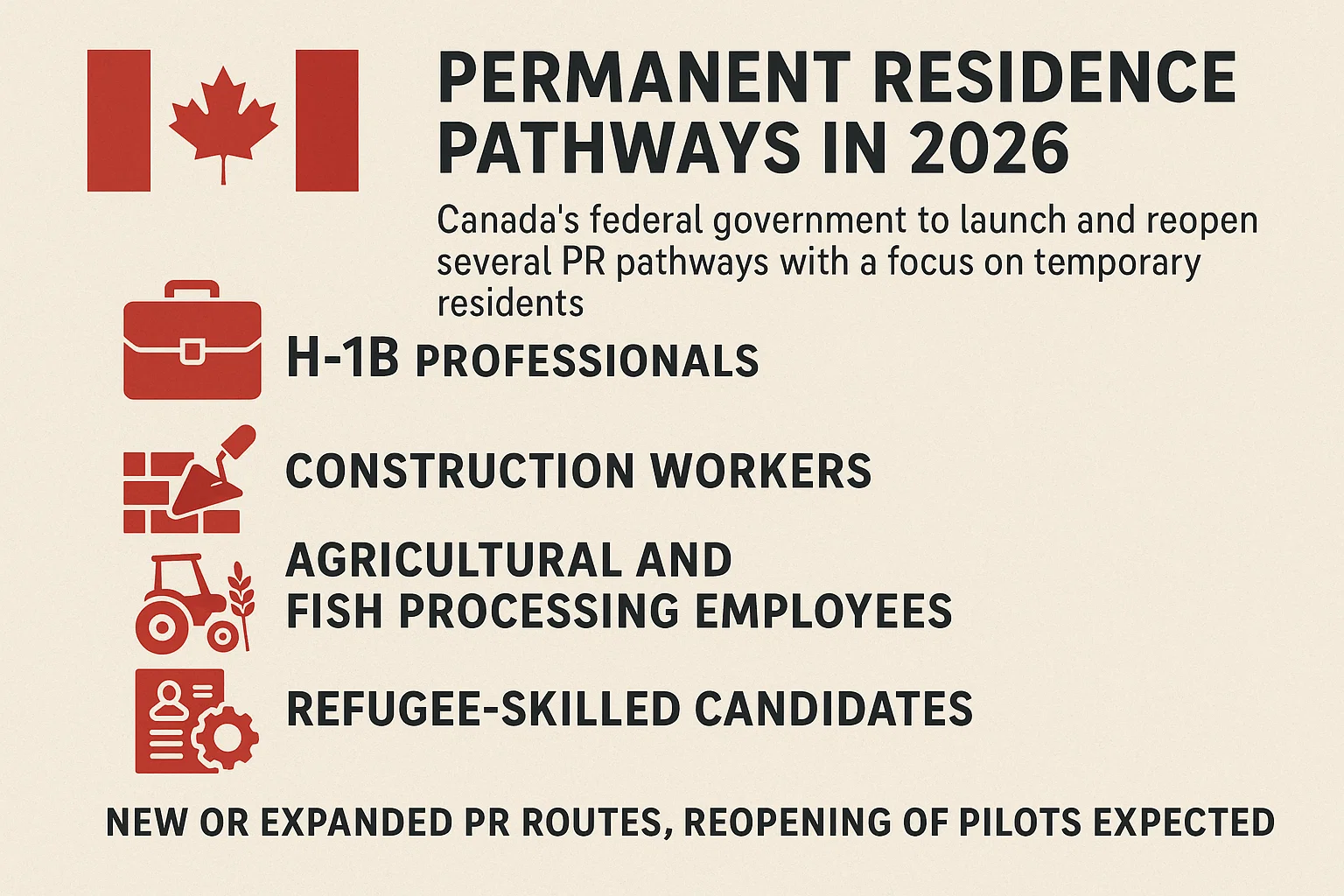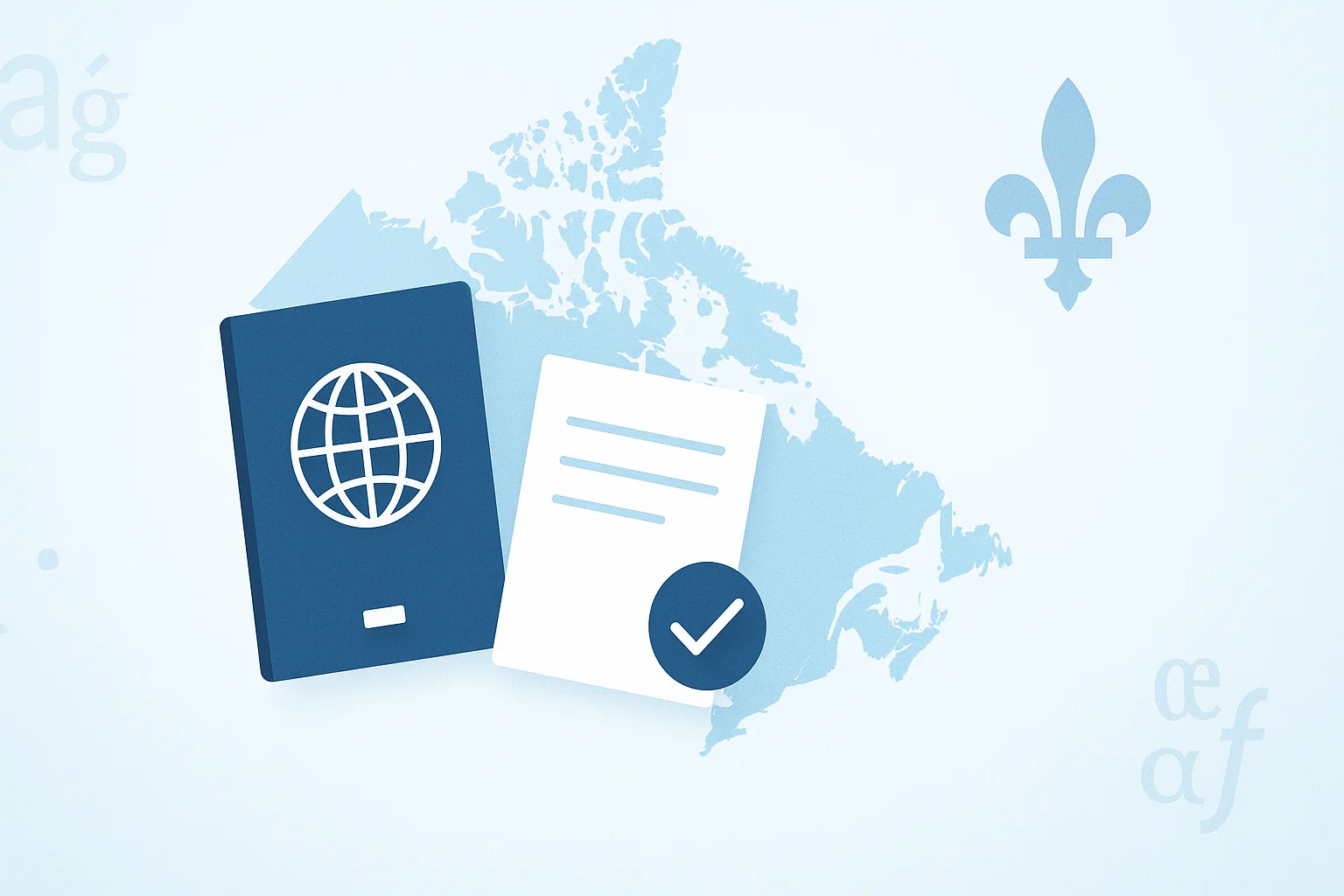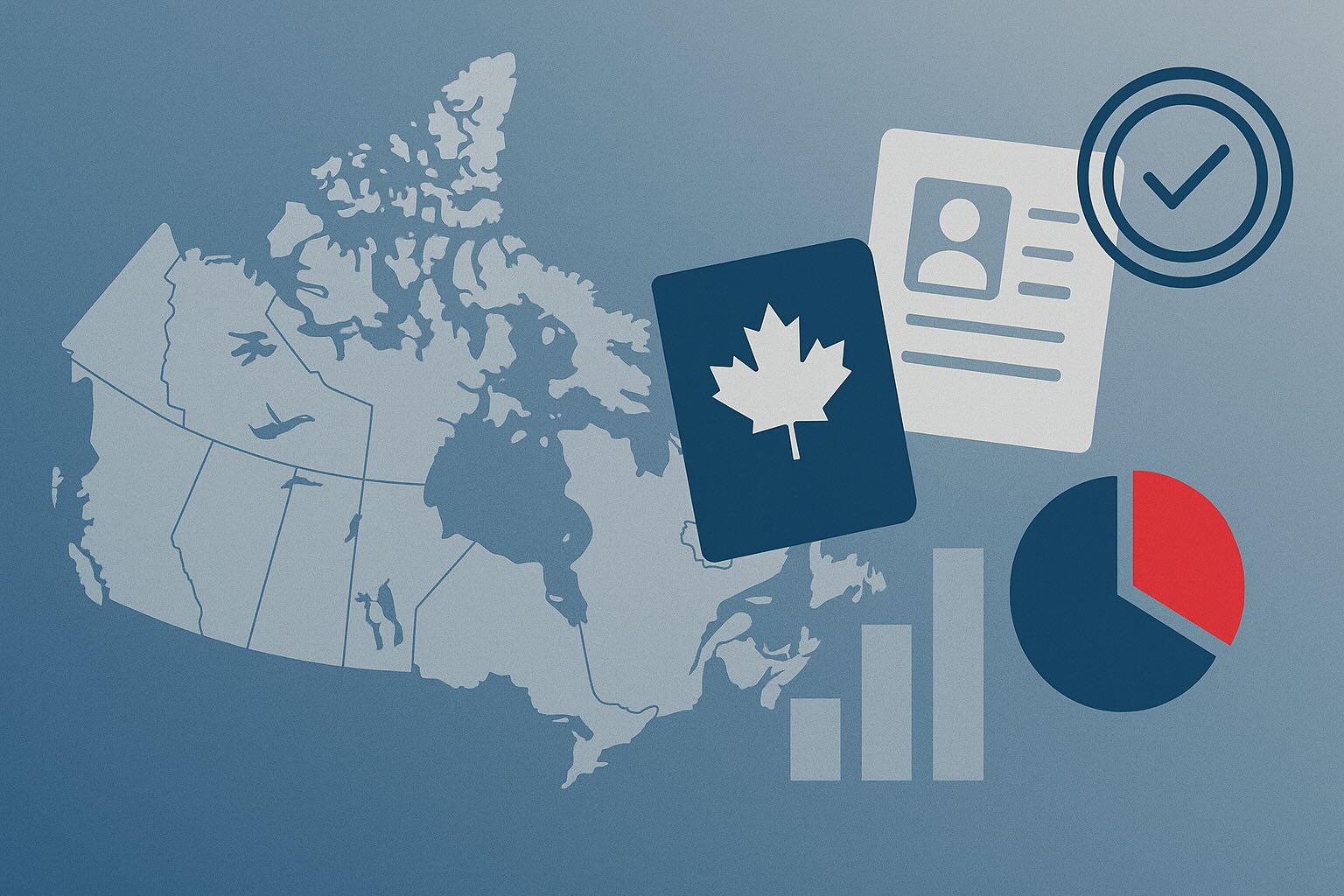
Immigration, Refugees and Citizenship Canada (IRCC) is expected to release the 2026–2028 Immigration Levels Plan by November 1, 2025, outlining Canada’s immigration targets for both permanent and temporary residents over the next three years. Based on previous federal commitments and recent immigration trends, the number of permanent residents admitted in 2026 is projected to remain below 416,500, aligning with the government’s policy to stabilize growth. While Express Entry allocations are expected to continue their upward trajectory following last year’s increase, Provincial Nominee Program (PNP) quotas—previously reduced significantly in 2025—may rebound after several provinces successfully lobbied for additional spots. On the other hand, temporary resident policies are set to tighten further, as Ottawa continues its plan to reduce non-permanent residents to below 5% of the total population. The Temporary Foreign Worker Program (TFWP) is undergoing structural reforms, while international student intake caps will remain strict. French-speaking immigration continues to be a key focus, with targets for Francophone permanent residents outside Quebec rising gradually to 12% by 2029.
Permanent Resident Admissions to Remain Stable
According to federal commitments, Canada’s permanent resident admissions target for 2026 is not expected to exceed 416,500—a level consistent with the Liberal Party’s election pledge to cap new permanent residents at 1% of the total population.
As of July 1, 2025, Canada’s population was approximately 41.65 million.
The 2024 Immigration Levels Plan reduced the 2025 permanent resident target by 20% compared to the 2023 plan. A comparison of past plans is shown below:
Comparison of Permanent Resident Targets
| Year | 2025–2027 Plan (Released 2024) | 2024–2026 Plan (Released 2023) |
|---|---|---|
| 2025 | 395,000 | 500,000 |
| 2026 | 380,000 | 500,000 |
| 2027 | 365,000 | — |
These targets include economic immigrants, family reunification, and refugees/humanitarian admissions.
Express Entry Allocations Rise Despite Overall Cuts
Despite an overall 20% cut in total permanent resident admissions last year, allocations for economic immigrants through Express Entry actually increased.
The 2024 plan replaced the former Federal High Skilled (FHS) category with two new streams:
- Federal Economic Priorities: Targeted draws for priority occupations and Francophone candidates
- In-Canada Focus: For temporary residents already living in Canada with valid status
Combined, these two new streams total 124,680 admissions in 2025 (41,700 under Federal Economic Priorities + 82,980 under In-Canada Focus), surpassing the previous year’s 117,500 under FHS.
Express Entry Allocation Changes
| Year | 2025–2027 Plan | 2025–2027 Plan | 2024–2026 Plan |
|---|---|---|---|
| Federal Economic Priorities | In-Canada Focus | Federal High Skilled | |
| 2025 | 41,700 | 82,980 | 117,500 |
| 2026 | 47,400 | 75,830 | 117,500 |
| 2027 | 47,800 | 70,930 | — |
Provincial Nominee Program May Rebound After Major Cuts
The 2025 Immigration Levels Plan significantly reduced allocations under the Provincial Nominee Program (PNP)—cutting quotas in half compared to previous years.
The quotas for 2025, 2026, and 2027 were set at 55,000 each year, down from 110,000 in 2024.
PNP Allocation Comparison
| Year | 2025–2027 Plan | 2024–2026 Plan |
|---|---|---|
| 2025 | 55,000 | 120,000 |
| 2026 | 55,000 | 120,000 |
| 2027 | 55,000 | — |
Several provinces—including British Columbia, Manitoba, Saskatchewan, Newfoundland and Labrador, and New Brunswick—have since successfully negotiated additional spots for 2025.
On October 16, Immigration Minister Lena Diab met with provincial and territorial counterparts to discuss increasing allocations for their nominee programs.
If this trend continues, 2026 PNP quotas could rise above the previous year’s 55,000 cap.
Temporary Resident Policies to Tighten Further
The upcoming plan is expected to continue including temporary resident targets, following the approach introduced in 2025.
IRCC has reaffirmed its commitment to lowering the share of non-permanent residents (NPRs) to below 5% of the total population by the end of 2027.
Temporary residents include foreign workers and international students. In last year’s plan, international students accounted for the majority of temporary resident admissions for 2026 and 2027, with smaller portions allocated to the TFWP and International Mobility Program (IMP).
Temporary Resident Admissions Targets
| Category | 2025 | 2026 | 2027 |
|---|---|---|---|
| International Mobility Program | 285,750 | 128,700 | 155,700 |
| Temporary Foreign Worker Program | 82,000 | 82,000 | 82,000 |
| International Students | 305,900 | 305,900 | 305,900 |
| Total Admissions | 673,650 | 516,600 | 543,600 |
Reforms Ahead for the Temporary Foreign Worker Program
Prime Minister Mark Carney has indicated that major reforms are coming to the Temporary Foreign Worker Program, though the exact impact on the current annual target of 82,000 remains unclear.
In a September 10 address in Edmonton, Carney stated that the TFWP must adopt a “targeted strategy” focusing on specific sectors and regional labour needs.
Over the past 18 months, the government has introduced major policy changes:
- Suspended LMIA processing for low-wage positions in regions with unemployment at or above 6%
- Raised wage thresholds for high-wage streams under the TFWP
- Reduced the employer cap for hiring under the program
- Restricted eligibility for Spousal Open Work Permits (SOWP) to spouses of workers in TEER 0–1 occupations and select high-demand TEER 2–3 roles
The TFWP has drawn increasing criticism this year, with Conservative Leader Pierre Poilievre calling for its abolition.
Francophone Immigration Remains a Priority
If the federal government delivers on its campaign promises, Francophone immigration targets are expected to increase by 2028.
Under the 2025–2027 Immigration Levels Plan, the share of French-speaking permanent residents settling outside Quebec will rise gradually—from 8.5% in 2025 to 9.5% in 2026, and 10% in 2027.
During the election, Carney also pledged to raise the share to 12% by 2029.
IRCC has reiterated that Francophone immigration will remain a core policy priority, even amid overall target reductions.
Recent initiatives include category-based Express Entry draws for French speakers, the Francophone Community Immigration Pilot, and expanded settlement support for French-speaking newcomers.
International Student Caps to Continue
It remains unclear whether the new plan will adjust international student admissions targets.
The previous plan set the following goals:
International Student Admissions Targets
- 2025: 305,900
- 2026: 305,900
- 2027: 305,900
To enforce these limits, the federal government introduced an annual study permit cap, requiring most applicants to obtain a Provincial Attestation Letter (PAL) before applying. These caps are updated annually, typically in January.









